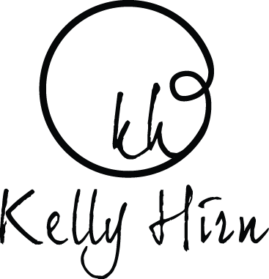We frequently hear the importance of being flexible. You want flexibility in your plans. Solutions are supposed to be nimble. Rigidity is seen as an obstacle for work, play, and family life. I’ll be honest, I’ve seen countless examples of people not being flexible enough. It happens both inside and outside the office. I’ve seen managers get up in arms about an employee who consistently is a solid performer getting to their desk 5 minutes late one day. I saw one employee train data entry as a strict ordered sequence when there was no gain to that in the end. There are parents and spouses that draw lines in the sand on small things without leaving space to understand circumstances. I know I have even been way too ridged at times with food, calories, and timing.
But can it go the other way? Can you be too flexible?
OK so note that I just ended on the topic of diet. When you think to yourself, can I be too flexible, you’re probably thinking, yup. You certainly can be too flexible with food, their parenting style, or their spouse. So let me say this, to be flexible you have to have a structure or boundary set. For those who don’t have that, likely they aren’t being flexible so much as being passive or lenient.
But I digress, let’s get back to the work side of things.
There was a recent project going on at work. This project had multiple facets and that involved decision points from different departments and required me to act as both part of the project and as a customer of it. I thoroughly enjoy wearing both of those hats but trying to have them on simultaneously is a struggle sometimes.
While working as part of the project team I noticed the customers being too ridged in their expectations. They weren’t allowing things to be ‘good enough’ and it was causing delays. A few people couldn’t even get off the ground with their portion because of the specificity they were attacking the work with.

I decided to do something different and be more flexible in the process.
When it was my turn to be the customer, I took an opposing approach. I looked at it as an opportunity to continuously improve. When asked how I wanted it to work I spoke to the ideal state, and the bare minimum state. If the ideal wasn’t possible, we tended toward the minimum knowing that we could make changes in the future. The immediate result of that, more time to focus on other things because finished this work quickly. The end result, a lot of re-work. Much of which, could have been avoided if we’d been more specific and focused on details up front.
Let me explain. Because I didn’t focus on the specifics and try to make it the best product it could be initially, we had to start the continuous improvement (in a very literal form) sooner than anticipated. I might have been able to get it off the ground faster, but this plane bumped along the ground more often in take off than expected. So yeah, I was too flexible, and I really didn’t know what I didn’t know about the expected outcome of this project. The key to success in the future is to find balance and surround yourself with the right people to uncover the blind spots.
Whether too ridged or too flexible, this next part made all the difference.
Often times our ego gets in the way of improving on what went wrong the last time. Reflection on objective information followed by action are the keys to correcting any failed or stumbling situation. I encourage you to keep reading and implement this the next time you’re too ridged or too flexible to learn from it. I had this actual conversation a very smart and well-respected member of the project team that I have a solid relationship with and trust. It went like this.
Me: This has been tough for all of us. You don’t have to answer right now but what could we have done differently to make this work better? I’m looking for what I could have done better specifically.
Project Team Member: This just happens sometimes.
Me: I get it but there must be something I can take away to improve on so this doesn’t happen again.
PTM: It’s hard when not everyone understands the technical side.
Me: Hm. Agree, I will probably never understand that fully (we all laugh) maybe I’ll work to just communicate more and stay closer to the details. If you think of anything I could change let me know.
PTM: Maybe more testing next time. (Followed by a litany of testing misses that could have been avoided.)

Photo by Artem Saranin on Pexels.com
It was really amazing how much information I got just by acting with humility to gain the objective info to reflect on. This team member did need a little coaxing to be honest with me, and like he said originally, it likely was a few things out of my control. I can control pieces of it though. I can make more of an effort with testing and the rest of the bullet points he outlined.
The moral of the story
The things to take away from this story is this,
There can always be too much of a good thing.
Whether you naturally lean more toward perfection or more toward trying something new to see what works, you need balance and a quality team around you to help you see your gaps and fill them.
Humility and a willingness to improve will overshadow almost any mistake.
When you fail, and you will, look for ways to improve. Ask other people how you can get better because you likely don’t know the whole story yourself. Genuinely make efforts to avoid this same type of failure in the future and ask others to hold you accountable.
